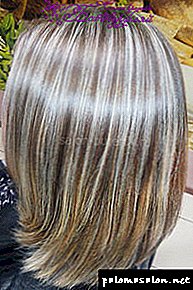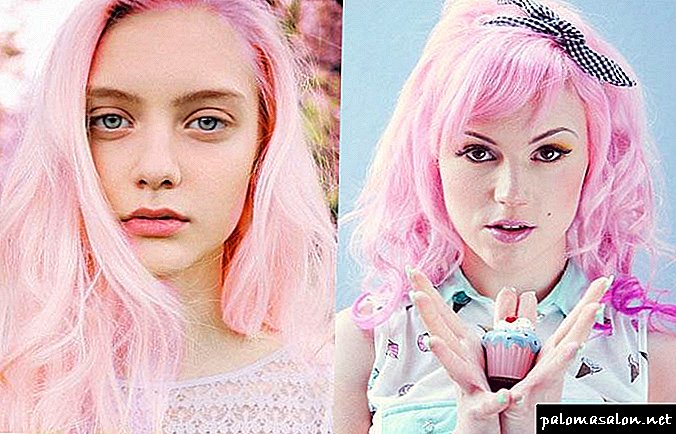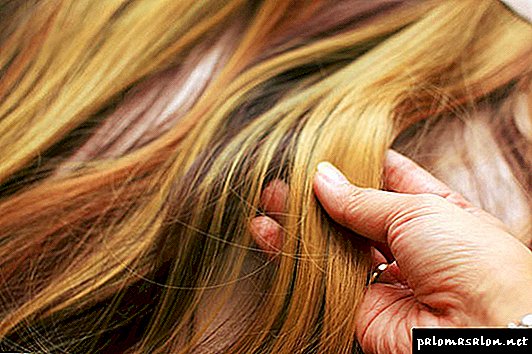The hairstyles are optionally divided into 4 categories. Thus, each hairstyle is classified in one of four categories. Forms of haircuts can be divided into four categories - it is a uniform form, followed by graduated, progressive and monolithic variants. This classification creates the desired haircut.

Hair style option is selected based on the following parameters:
Remember! Choosing the right variety, you will emphasize the advantages and hide the lack of appearance.
Monolithic (uniform) short haircut
Hair length is the same. It is possible to use cascade technology to give the hairstyle additional volume and negligence effect. This hairstyle will suit owners of a round and square variety of face.
Example: cascade car. As a rule, such a massive haircut gives the locks volume and without applying styling products.

Graduated type: matching to oval face shape
Characteristic of this type: different lengths. Each length overlaps one another. This creates the effect of a triangular type of haircut. Owners of the oval face variety, having made such a haircut, will visually hide the flaws of the exterior.
The bottom of the pryadok texture. Top hairstyles - smooth and with volume.

Progressive haircuts for women
According to the rules of creating hairstyles, the progressive type means that the inner part of the order is short, and the outer part has a greater length. Due to this structure, the hair style is visually lengthened.
The figure shows an example for this variety. As you can see, the hair is uniform, the inner part of the tips is shorter.

Uniform variety
According to the standard, a uniform haircut on the schemes is indicated in green. This type implies that strands have the same length. Smoothness, uniformity - characteristics of the image. This hairstyle does not create a volume on the hair and does not imply density.
The volume is given using special chemicals: varnishes, mousses, foams, gels and other cosmetic products.
An example of a uniform type of modeling strands: square to the shoulders, long even hair, and others. This version of the simulation is suitable for all owners of an even skull. Most successfully this variety is emphasized by short and medium length locks.

The figure above shows one of the types of uniform modeling strands. As you can see, the haircut completely repeats the shape of the head. Volume obtained through the use of cosmetics. The silhouette of this type repeats the contour of the head as much as possible.
The main types of hairstyles
In addition to the options for strands, it is also necessary to know the generally accepted classification of varieties of haircuts. There are two main types:
The basic model option is a method of giving hair a special shape, according to generally accepted rules (for example, a cascade). Modeling variety is created based on the base. However, the master takes into account the personal unique features of the person’s facial features. The combined model hairstyle is several basic ones at once, which are synthesized into one.
6 posts
The shape of the array represents a progression of lengths from the outside to the inside. These lengths are displayed one level in free fall, creating a smooth (non-activated) texture. At the crown, the shape follows the oval of the head. The silhouette of the massive form is extended at the bottom along the perimeter, the massive form
Produces the effect of maximum mass.
The graded shape (yellow color) also represents the progression of length from the outside to the inside. But here the lengths overlap one another, leaving the tips visible. EFFECT: activated texture at the bottom and smooth at the top. Graduated forms give, in the main, a triangular silhouette.
The silhouette of the graduated form is extended along the perimeter in the middle part. By providing this effect widths. Used in some areas of hair, so on. produces mass dispersion.
A uniform structure (green) represents the same length around the entire head and creates a rounded shape and activated texture.
The silhouette of a uniform shape repeats the roundness of the head. It does not create a mass effect.
COMBINED FORMS - part (1)
A combination of two or more textures in a hairstyle.
Most haircuts performed in salons. are combinations of fundamental forms that open up an unlimited range of possibilities. Consider several options. Progressive layers in the upper part in combination with the graduated lower part create the bulkiness of the form, keeping the effect of mass around the perimeter. In this case, the hairs of the progressive layers are aligned with the hair of the graduated part, giving the surface
Fully activated look.
This combination includes uniform layers at the top and progressive layers at the bottom. Since each of these forms creates an activated texture, their combination will also have a fully activated surface.
When the longest hairs of the progressive layers of the upper part coincide with the longest hair of the massive structure of the lower part, the surface has a fully activated look. and the shape perimeter creates the effect of maximum mass.
COMBINED FORMS - part (2)
The massive form creates the effect of maximum mass in the area where all the hair reaches the same length level.
The combination of progressive layers in the upper part and graded in the lower one produces a mass effect at the junction of two structures. Mass line (and produced by it
I extension) moves with a change in the ratio of the two structures.
The effect of mass, distributed over a certain zone, and not concentrated on one line, is called a zone of mass. When dissipated, the effect of mass decreases.
Dlya_stud_1
Arched machinery is a razor cutting technique in which the movement of a hand holding a razor follows the shape of an arch.
Biselling is the effect of cutting when the claws are turned up or down along the line of the form.
The spatial axis is a two-dimensional symbolic image used to describe lines, directions, projection angles.
The technique of cutting the machine over the comb - comb controls the length of the strands during the process of cutting. Scissors can be used instead of the machine.
Reverse haircut - the main technique for cutting progressive form.
Cross-check - the last stage of the haircut, which verifies the accuracy of the haircut using the lines opposite to the selected part.
The technique of a free hand is a haircut technique, with coordinated control carried out only by the eyes and the hand.
Multiple design lines — two or more fixed design lines.Reducing hair to nothing- smooth change of hair length from the shortest to the longest.
Way to haircut "strand on the strand." Using the method of haircut "strand on the strand", determine the control strand, the following combed and imposed on the control, cut off at the level of its length.
Way to haircut "strand by strand." This method of accurate haircut is similar to the method of haircut imposing strands on the strand. The difference lies in the fact that strands of hair are separated by vertical partings. The length of cut hair is controlled in two ways: a pre-cut hair strand is defined as a control for the next one (Fig. 8a), each successive strand of hair is clipped, focusing on the first one, the control one (Fig. 8b).
Filing- thinning of the hair, is performed depending on the design of the hairstyle on the entire mass of hair or in separate areas.
Graduation- cutting the hair at a certain angle, makes it possible to adjust the thickness and volume of the hair, visually increase them due to the techniques of cutting the strands with a delay of the latter at different angles.
Grinding - removal of damaged hair tips. It is performed on dry hair.
Smoky transition Used in men's haircuts it is a smooth transition smooth surface.
Hairstyle consists of 3 elements: shape, texture and color.
The form This is a three-dimensional image of a hairstyle that is characterized by a width and depth.
Circuit - two-dimensional image of a volumetric shape consisting of length and width. The contour is called a silhouette
Texture - quality of the hair surface (visual perception). Texture is active, inactive and combined. Active is when the tips of the hair stick out or are on different levels. Inactive texture - visible only the top layer of hair. But there are haircuts where we find a combination of textures. The line that separates the 2 textures is called the Cumbrera Line.



